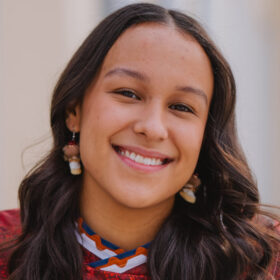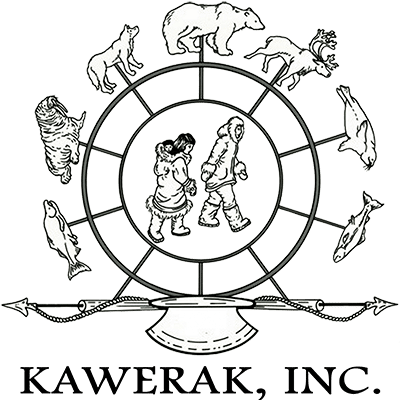What drew you to the Caleb Scholars Program?
I was drawn to the Caleb Scholars Program because of its mission to foster Inuit conservation and advocacy. As Caleb Scholars scholarship recipient in 2023, I was exposed to the fellowship program and its plethora of opportunities. Previous Caleb Scholars Fellows that I know are community builders, leaders, and continue to inspire me to do the same! As I continue to learn more about myself, culture, education, and interests, I can trust that Caleb Scholars is there to support my goals.
What does Inuit-led conservation advocacy mean to you?
To me, Inuit-led conservation advocacy is the ability for Inuit to govern and protect all aspects of their communities and ways of life, holding traditional knowledge and practices in the highest regard for the benefit of generations to come. Important aspects of conservation advocacy include informed decision and policy making around resource development, research, hunting, fishing, and gathering, and Inuit environmental stewardship in these areas. Conservation advocacy is so important for Alaska and the Bering Strait region because of its relevance ensuring cultural continuity, preserving traditional ecological knowledge, economic stability, and overall wellbeing. My education and degree program has supported my professional, academic, and personal development. Native American and Indigenous Studies is a field that has provided me with a foundation to understand Indigenous histories, worldviews, experiences, leaders, and futures. Earth Sciences is another aspect of my degree program that has helped me understand interactions within our environment. I have learned about data collection, weather patterns, planetary development, and Western research practices. These tools have been valuable in helping me understand the ways that research and science is used in Alaska and the Bering Strait. Through Earth Sciences I’ve also learned how to represent myself, culture, and community in academic spaces that have historically underrepresented Indigenous peoples.
How do you engage with environmental issues/conservation advocacy in school and/or at home?
Engaging with environmental issues and conservation as a young person can be hard. In many important environmental discussions, youth voices can be few or even absent. It can be hard for young people to be interested in conservation and advocacy with proper guidance, context, and intention. Providing pathways for youth to be involved in conservation and advocacy work helps prepare future leaders and strengthen cultural continuity. This summer, I’ve had the opportunity to work in Nome doing marine mammal surveys, mentored by Gay Sheffield, Emma Pate, and Chuck Menadelook. I have learned so much about marine wildlife and the steps we take to steward our marine resources in a changing environment. My mentors’ knowledge of marine policy, biology, and Inuit history of the Bering Strait region has provided me with enthusiasm and ambition to continue this work. I’ve learned about the presence of harmful algae in the Bering Strait, how warming waters continue to impact subsistence lifestyles, and what resources are available to mitigate environmental impact in the region. I credit much of my additional experience in environmental conservation to the Arctic Youth Ambassadors program! AYA has provided me with opportunities such as professional development, conference attendance, youth-led environmental spaces, and so much more. Along with their support, I am grateful to have opportunities at school to foster my environmental interests. Dartmouth Undergraduate Traditional Ecological Knowledge Society (DUTEKS) and the Native American Program and Department are two groups on campus that have supported me and countless other students. Quyaana to Gay, Chuck, Emma, AYA, Dartmouth’s Indigenous-led spaces, and the Caleb Scholars Program for opportunities to engage in environmental issues and conservation advocacy!

